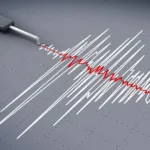Unlocking the Secrets of Ghost Particles with Water Detectors
In 2018, a remarkable discovery took place in Ontario, Canada, when a tank of ultra-pure water buried deep under kilometers of rock detected a nearly imperceptible particle passing through it. This groundbreaking event marked the first time that water was used to detect a particle called an antineutrino, originating from a nuclear reactor more than 240 kilometers away. This achievement holds the promise of revolutionizing neutrino experiments and monitoring technology, making use of readily available, safe, and cost-effective materials.
The Enigmatic Neutrinos
Neutrinos, often referred to as “ghost particles,” are among the most abundant particles in the universe. However, they possess peculiar characteristics that set them apart. Neutrinos are virtually massless, electrically neutral, and interact with other particles only minimally. They traverse through both space and solid matter with incredible ease, behaving as if all matter were insubstantial.
Antineutrinos: The Counterpart to Neutrinos
Antineutrinos are the antiparticle counterparts to neutrinos. Typically, antiparticles bear the opposite charge of their corresponding particles. For instance, the antiparticle of the negatively charged electron is the positively charged positron. However, neutrinos have no electric charge, making it challenging to distinguish between neutrinos and antineutrinos. Scientists rely on the fact that an electron neutrino is associated with a positron, while an electron antineutrino is linked with an electron.
The Role of Antineutrinos in Nuclear Beta Decay
Electron antineutrinos emerge during a process known as nuclear beta decay, a form of radioactive decay where a neutron transforms into a proton, an electron, and an antineutrino. A critical aspect of this process is the interaction between an electron antineutrino and a proton, leading to the creation of a positron and a neutron, termed “inverse beta decay.”
Detecting Antineutrinos with Precision
To detect inverse beta decay, scientists employ large tanks filled with liquid and equipped with photomultiplier tubes. These tanks are designed to capture the faint glow of Cherenkov radiation, produced when charged particles move faster than light within the liquid. This sensitivity to faint light is crucial for the detection of antineutrinos.
SNO+: The Deep Underground Laboratory
Enter SNO+ (Sudbury Neutrino Observatory Plus), located beneath over 2 kilometers of rock in Ontario. It stands as the world’s deepest underground laboratory, offering exceptional protection against interference from cosmic rays. During a calibration phase in 2018, the lab’s 780-tonne spherical tank was filled with ultrapure water.
A Remarkable Discovery in Data
Analyzing 190 days’ worth of data collected during this calibration phase, the SNO+ collaboration made a significant discovery – evidence of inverse beta decay. The neutron generated in this process is captured by a hydrogen nucleus in the water, resulting in a specific energy emission of 2.2 megaelectron volts. Notably, water Cherenkov detectors typically struggle to detect signals below 3 megaelectronvolts, but the water-filled SNO+ achieved detection down to 1.4 megaelectronvolts, with an efficiency of approximately 50 percent at 2.2 megaelectronvolts.
The Promise of Water Detectors for Nuclear Reactor Monitoring
This breakthrough suggests that water detectors have the potential to monitor the power production of nuclear reactors effectively. The ability to harness this technology could lead to safer and more efficient reactor operations.
Unraveling Neutrinos and Antineutrinos
Beyond reactor monitoring, SNO+ plays a vital role in enhancing our understanding of neutrinos and antineutrinos. Since neutrinos cannot be measured directly, many mysteries about them remain unsolved. A pivotal question is whether neutrinos and antineutrinos are the same particles. SNO+ is currently on the quest to uncover rare and never-before-seen decays that could provide answers to this fundamental question.
A Fascinating Journey with Water
Physicist Logan Lebanowski, part of the SNO+ collaboration and affiliated with the University of California, Berkeley, expressed their intrigue in the use of pure water to detect antineutrinos from distant reactors. Despite the significant effort required to extract a handful of signals from 190 days of data, the results have been truly gratifying. This pioneering research opens up exciting possibilities in our quest to understand the enigmatic world of neutrinos and antineutrinos.
Also Read: Groundbreaking Discovery: Neutrinos Detected In Collider Experiment For The First Time






